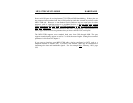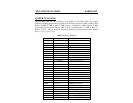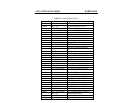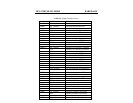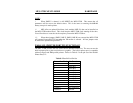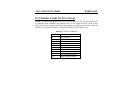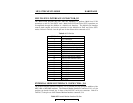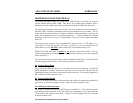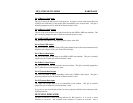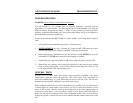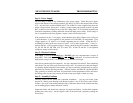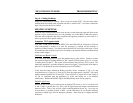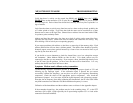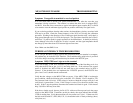
MFJ-1278B MULTI-MODE HARDWARE
Pin 5 SIO RTS Output
This signal is used for transmitter activation. The SIO will pull this output low when the
MFJ-1278B wants to transmit; otherwise it will remain high. This pin is normally jumpered
to pin 6 when the on-board modem is used.
Pin 6 Transmitter Key Input
This signal is an input to the on-board modem. It activates the PTT pin of the radio
connector via the watch-dog timer. It should be left high and pulled low only when
transmission is desired. This pin is normally jumpered to pin 5 when the on-board modem is
used.
Pin 7 CONNECT Status Output
This pin is an output from the SIO. It is normally low and goes high only when the MFJ-
1278B is in the connected (error-free) mode with another packet station. Its status is
monitored via the CON LED.
Pin 8 Unacknowledged Packets Pending Status Output
This pin is an output from the SIO. It is normally low and goes high only when this MFJ-
1278B has unacknowledged packets in its transmit buffer. Its status is monitored via the STA
LED.
Pin 9 CTS Input
This pin is an input to the SIO. It is high when the attached modem is not ready to accept
data, and low when the attached modem is ready to accept data. The TNC will not attempt to
send data when this pin is high. This pin is normally jumpered to pin 10 when the on-board
modem is used.
Pin 10 Transmitter Key Input
This pin is physically tied to pin 6, above. It is used in conjunction with pin 9, above to
allow the MFJ- 1278B to use the on-board modem whenever the transmitter is activated.
Pin 11 Transmitter Clock (16x) Input
This pin is tied to the NRZ-to-NRZI converter, which expects a clock signal at 16 times the
desired radio port data rate, e.g., 4800 Hz for 300 baud. This pin is normally jumpered to pin
12 when the on-board modem is used.
Pin 12 Transmitter Clock (16x) Output
This pin is tied to the radio baud rate switch network. It provides a clock at 16 times the



